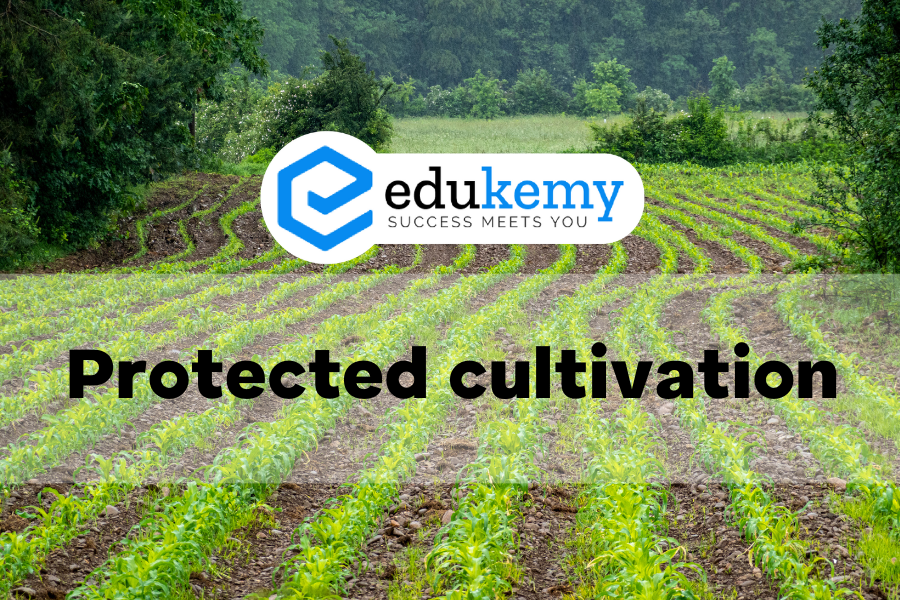
Protected cultivation, through methods such as greenhouse farming or polytunnel systems, plays a pivotal role in fostering the growth of healthier and more abundant produce. By shielding crops from adverse environmental conditions and pests, this practice offers a controlled and optimized growing environment. For instance, in regions with harsh climates, such as extreme temperatures or unpredictable weather patterns, protected cultivation ensures consistent and suitable conditions for plant growth throughout the year. Moreover, protection from pests and diseases reduces the need for chemical pesticides, promoting organic farming practices and enhancing the nutritional value of the produce. Consequently, fruits, vegetables, and herbs cultivated in protected environments often exhibit superior quality, increased yields, and extended shelf life, meeting the demands of consumers for fresher and more nutritious food options.
Answer
Introduction:
Protected cultivation involves utilizing structures like greenhouses, polyhouses, net houses, or shade houses to manipulate the growing environment, ensuring optimal plant growth and yield.
Body:
Temperature Control:
Greenhouses maintain optimal temperatures, mitigating stress on plants during extreme weather.
- Example: In the Netherlands, greenhouse cultivation of tomatoes thrives year-round due to controlled temperature, resulting in larger and healthier produce.
Pest and Disease Control:
Structures like net houses physically exclude pests, reducing the need for chemical pesticides.
- Example: In India, polyhouses shield high-value crops, leading to increased yields and better quality produce by minimizing pest and disease impact.
Water and Nutrient Management:
Advanced irrigation systems in protected cultivation ensure precise delivery of water and nutrients.
- Example: Drip irrigation in Israel’s greenhouses enhances water efficiency, contributing to healthier plants and increased yields.
Extended Growing Season:
Protected cultivation extends the growing season, enabling year-round production.
- Example: In Japan, greenhouses facilitate continuous cultivation of strawberries, showcasing the potential of protected environments for year-round, high-quality produce.
Reduced Exposure to Environmental Stressors:
Protection from wind, hail, and heavy rainfall minimizes damage to plants.
- Example: In South Africa, shade houses shield crops from intense sunlight and hail, ensuring healthier plants and larger produce in regions prone to extreme weather.
Increased Yields and Improved Quality:
Overall, protected cultivation consistently leads to higher yields and improved crop quality.
- Example: In Kenya, the use of polyhouses has led to increased yields of roses, meeting international standards for quality and quantity.
Protected cultivation emerges as a pivotal tool for enhancing agricultural productivity and sustainability. The proven benefits, ranging from temperature regulation to disease control, highlight its importance globally.
Conclusion:
As we move forward, investing in and expanding protected cultivation methods can contribute significantly to ensuring a consistent supply of healthier and larger produce, thereby meeting the growing demand for sustainable agriculture.
In case you still have your doubts, contact us on 9811333901.
For UPSC Prelims Resources, Click here
For Daily Updates and Study Material:
Join our Telegram Channel – Edukemy for IAS
- 1. Learn through Videos – here
- 2. Be Exam Ready by Practicing Daily MCQs – here
- 3. Daily Newsletter – Get all your Current Affairs Covered – here
- 4. Mains Answer Writing Practice – here

